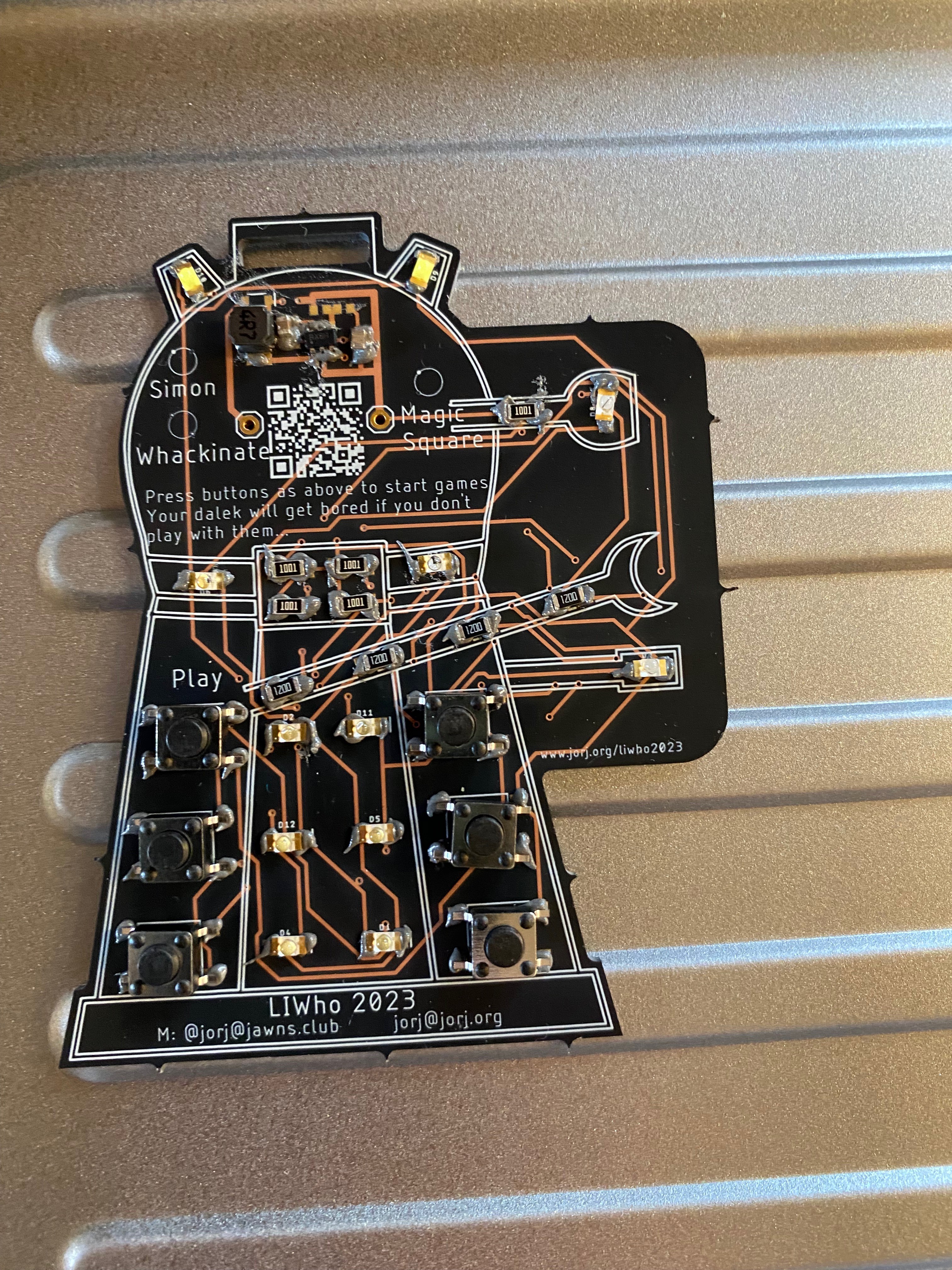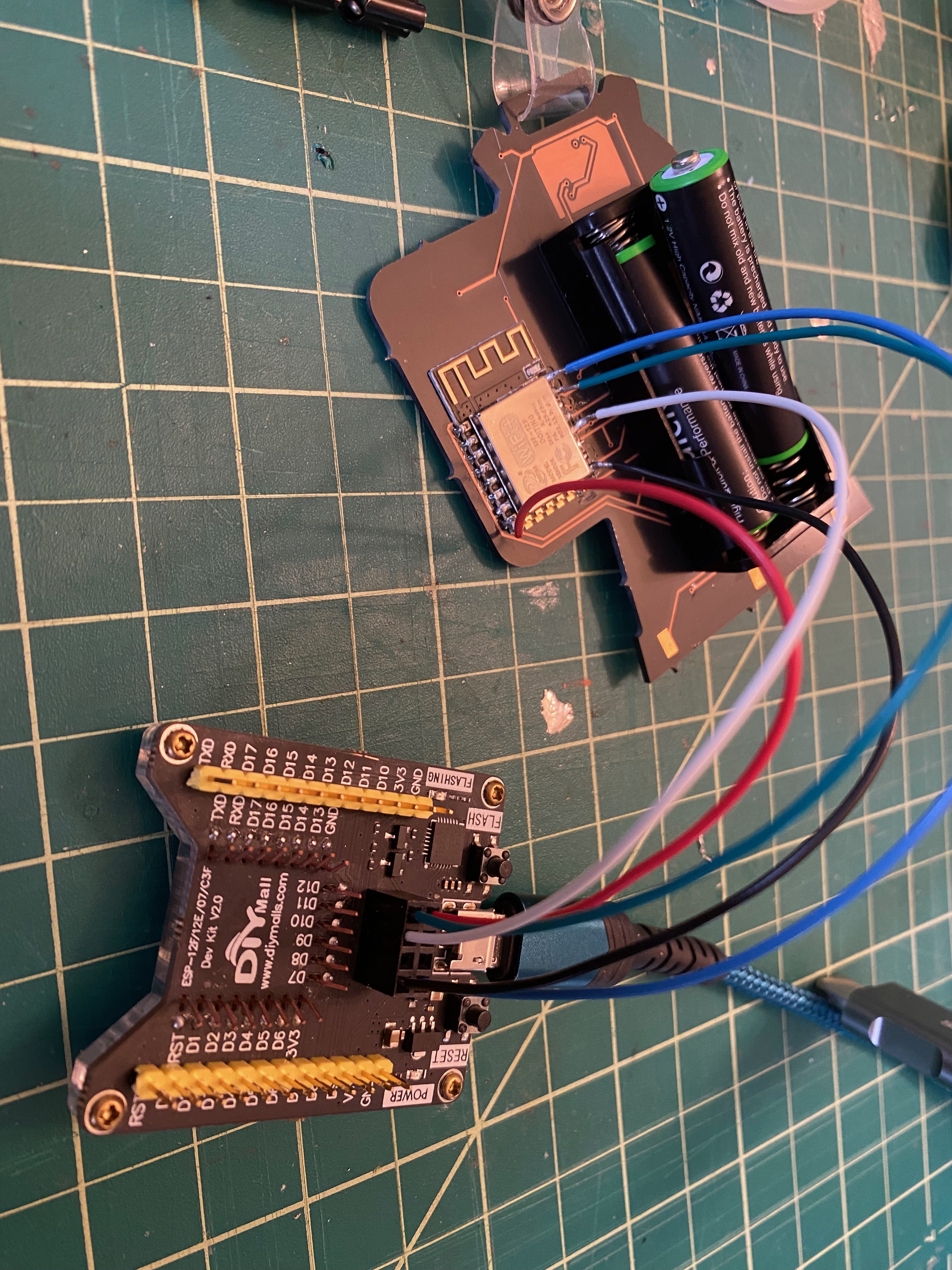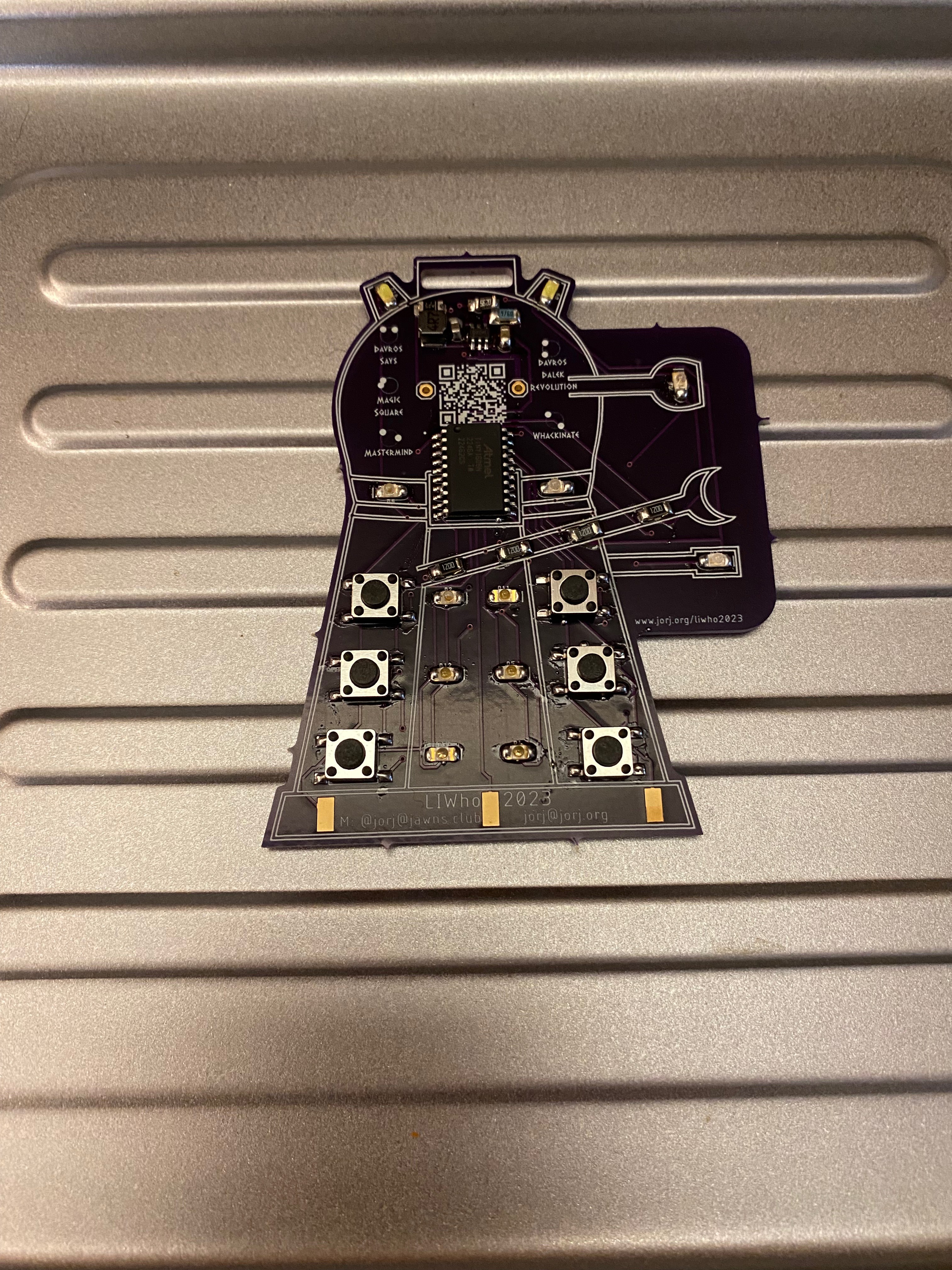In 2022, the return of LIWho was announced and I unpacked the goodies I'd stored in 2020. Now, what was the problem again? Right - I ran out of program space. It could play a simple pattern-matching Simon; Whack-a-mole, where it keeps lighting up lights for you to hit buttons; and Magic Square, a game from the 1980s Merlin where you tried to light up all of the lights. I had some concept of Tamagotchi in it, where it nagged you to play Simon occasionally; and a bit of social interaction where you could "introduce" badges to each other with special button-press sequences. But I couldn't really tie it together without more program space; these were just disjointed bits of code that were kinda fun on their own - and probably would have been fine - but weren't enough for me.
So I spent a few months building and rebuilding bagdes with different processors. The two likely culprits were the ESP8266 (oooh, wifi!) and the ATTiny 1606 (a beefier and more modern '84a).
The problems I needed to solve:
- Noise immunity. The serial port docking protocol, and programming pins exposed on pads, meant occasional hangs or reboots. I played with an ad-hoc I2C bus for docking and reprogramming via bootloader, but it really didn't help at all.
- Code space. I had ideas for other code to write, but couldn't shoe-horn it in place.
- Power. Up til now, I'd been running everything directly off of a CR2032 battery. The lights dim as you play; I kept looking for LEDs that ran at lower voltages to get the brightest possible experience. It felt like a race to the bottom.
- Improvement of the Tamagotchi and social aspects. These existed, but didn't really feel like part of the experience.
- More knowledge about SMT LEDs. I picked some basically at random for the charlieplex display, and needed to understand more about available parts.
- More (some!) experience with reflow soldering. I'd been soldering these together by hand, and knew that wouldn't scale up to the hundred badges I wanted to produce.
LIWho 2022 came and went (and we did not attend), so I set my sights on solving all of those things for the 2023 con.
January, 2022: an ESP8266 prototype. Space for two batteries (or a AAA battery pack) on the back, and the ESP-12F mounted on the back as well. The first prototype where I tried out SMT switches.

At the top is a boost supply, built around the MCP1640. I knew the ESP-12F would need a more stable supply to work well, and as a bonus it got me bright LEDs through the battery's full life. (I also replaced the mono-colored LEDs with different colors by area - white at the top, blue on the right, yellow on the collar, and green down the skirt. Because why not?)

This certainly had a ton of programming space, and the possibility of direct Wi-Fi communication with centralized APIs. I thought a little about switching to an ESP32 to use BLE for badge-to-badge communication, but wanted to tame the battery life issues first: this thing was a monster, and needed at least AAAs to run for any significant period. Even with WiFi disabled, I never got close to the runtime I needed: at least 3 days, 4 for safety. (My best efforts got to about 20 hours if I remember correctly.) The biggest problem was that, without an external interrupt, I couldn't wake from deep sleep. I did design an external interrupt prototype which sort of worked, and might have gotten to the power consumption I wanted, but the parts cost really started to skyrocket.
Now, I've not mentioned the half a dozen changes while playing with the three boards I got in that order - reducing current usage by swapping resistors; trying different kinds of LEDs; playing with different serial port configurations. With the 12F it still wasn't really fixing any of the problems except for storage space. I just had new vast areas of potential problems. Combined with the increasing cost, I decided to put the whole thing down for a month.
When I picked it back up, I hacked in an ATTiny-1606. The first step is always getting the Charlieplex LEDs running, so here you can see the color LEDs doing their thing:
(As a quick aside: this isn't as insane as the first ESP-12F test I did, which held the 12F on with a dozen enameled wires. It was a total mess, but proved that I'd be able to run a 12F before I spent money on prototype boards.)
There wasn't much to change from here, though - it worked, and was substantially like the original '84a board. The biggest improvement being that the more modern programming interface ("UPDI Serial Programming") is a 1-pin affair that has full debugging capability - which means that I could do away with the whole docking protocol, and have the dock put the chip into debugging mode. And better noise immunity.
This was it - I felt like I might actually be close. And in hindsight, I was right on top of it. I replaced a couple of SMT parts with bigger packages to make assembly easier; changed the silk screen; and with a swap of the processor, this prototype is exactly the same as the final version.

 Jorj Bauer
Jorj Bauer
Discussions
Become a Hackaday.io Member
Create an account to leave a comment. Already have an account? Log In.